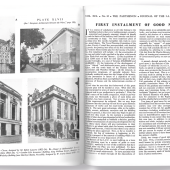100 years of CABE
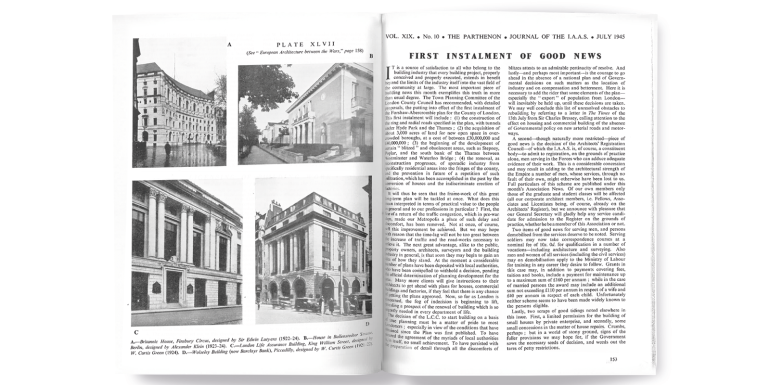
1945
CABE turns 100 years old this year. To mark this milestone, Building Engineer takes a look back at the journal through the years.
We look through the annals of the journal from 1945 and 1935 to see what the hot topics of the day were, what was facing the industry and how CABE’s professional membership responded.
The Parthenon 1945,July and August issues
In a remarkable time capsule, World War II was ongoing at the time of publication. July’s issue content includes: ‘First Instalment of Good News’ (covering new building in blitzed parts of London and how this period of reconstruction can be used to remove “errors of the past” such as factory buildings in residential areas); ‘Licensing of Building Work’ (covering the Ministry of Health’s prioritisation of repairing war damage, especially to homes, and the necessity of making building and civil engineering labour available for this); and ‘European Architecture Between The Wars’ (the second in a series of articles by author Arnold Whittick on classical influences on architectural styles being rejected after the psychological upheaval of war).
Technical articles include how local authorities were being urged to grant licences to private builders to rebuild houses destroyed in the war. ‘Association news’ decries a lack of volunteer architects and surveyors willing to undertake work for local authorities – presumably to support rebuilding efforts – and features a request from the War Office, due to a shortage of officers and potential officers in the Corps of Royal Engineers, for members to volunteer any assistants not already serving in the forces for the vacancies.
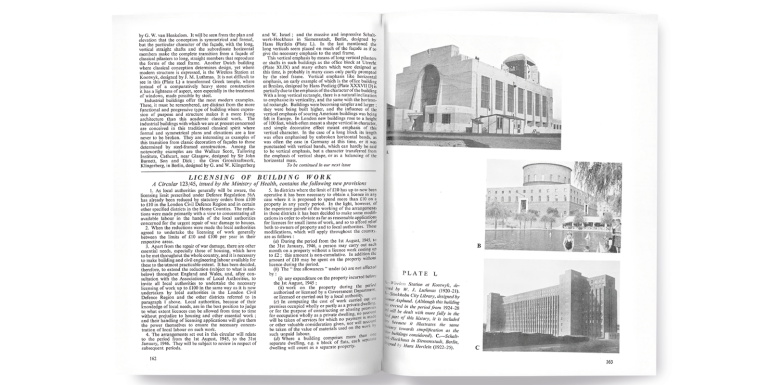
1945
Sense of belonging
The Association news also prints a letter from a surveyor, who writes wistfully about his former membership: “I have watched with interest and, indeed, admiration the progress and growth of the Association.” He urges members to make the most of their time in it: “So to those I know and do not know in the Association, let me say: when the hands of the clock pass midnight on September 12th next, remember that the Association, your Alma Mater, is entering on its twenty-first year and say to yourself: ‘What can I do and what can I give to my Association so that I, too, may be remembered by its members in the years ahead?’”
The August issue from the same year greets the incoming Labour government with concerns about what state the architects and surveyors serving in the forces will find their industry in upon their return. “The Ministry of Health has lately invited lists of architects and surveyors to assist in the planning of sites and the design of housing. The Ministry of Health however, has not insisted (it probably has not the power to insist) on the employment of qualified men for this purpose.”
Alongside the issue of paying professionals fairly for their expertise, the Incorporated Association of Architects and Surveyors (IAAS) notes that the new government has inherited problems from the previous coalition’s “sporadic” building and that it should turn its attention immediately to housing because “now we are facing a new war – a war upon homelessness, slums, inadequate factories and other obsolete buildings”.
Also in the issue is a technical article on the ‘Extension of Electricity Supply to New Housing Estates’, which bemoans the “annoying and confusing” array of tariffs. Meanwhile the Association update section picks up the competency theme once more – namely, that public authorities are only appointing architects who are either fellows or associates of that authority, thereby shutting out professionals on the register and those returning from war.
During the course of the exchange, Major Athoe says he “knew from experience the great care exercised by the committee in admitting architects to the register … to protect the public and … ensure that all the registered persons were competent to practice their profession. In his view, registration was intended to be the acid test and therefore, all registered architects should be eligible for the appointments under discussion.”
Another member is similarly quoted: “It could rightly be said that a man whose name is on the register is a man who has been scrutinised very carefully as to his qualifications to act.” This has echoes of today’s Building Safety Regulator registration of building inspectors in England and Wales.
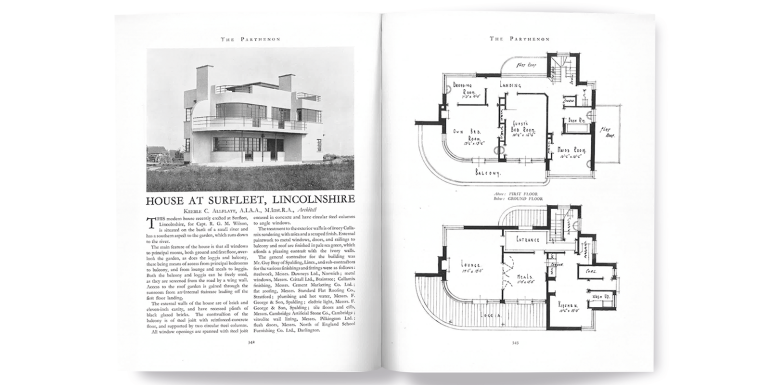
1935
The Parthenon 1935, July and August issues
Hindsight is a wonderful thing. Published four years before the start of World War II, the Nazi Party had been in power in Germany for two years and the National Fascist Party had been in power in Italy for 13. In this and the August issue, there were plans afoot for an IAAS delegation to attend a conference in Italy and meet with Prime Minister Mussolini (pictured).
The issue opens by taking stock. “It is fitting … that so successful an enterprise [the IAAS] should be adequately represented by the monthly journal which was formed some years ago in order that the objects and achievements of the Association should receive the publicity they deserve. We want every member to feel that this is his own paper; that it exists to serve him.” What follows is a plea for content submissions from members – which the journal is still very happy to receive!
The issue covers a tour of the refurbished Bank of England and a consideration of architecture in relation to town planning (including the layout of new housing and ways to use space instead of the historical ‘houses in a row, parallel lines’). It also features a state-of-the-art urban housing development, the aim of which was “to incorporate into the building every amenity to be found in a modern hotel, from service stores and restaurant to a ‘lido’ and roof garden” including water-heated radiators and wells for a pure water supply.
A technical section of sorts, aimed at the surveyor membership, discusses damp-proof courses, lime-wash and waterproofing particulars. The Association news mentions chapters in Australia, New Zealand and the Midlands, as well as a call for the safe return of books to the IAAS library.
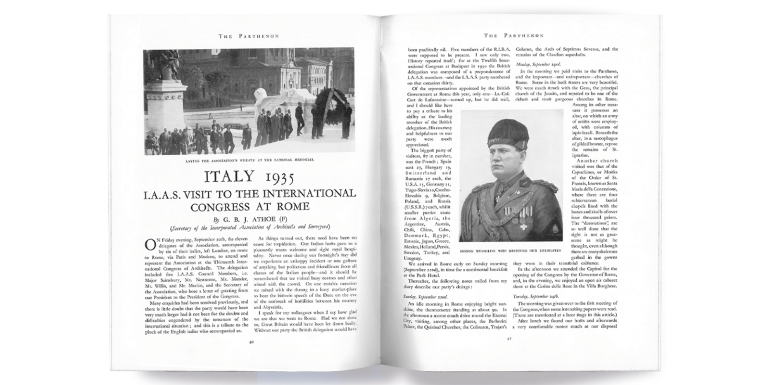
1935
Changing role
The August issue from the same year notes Sir Edwin L Lutyens as President (which is why the CABE HQ building now is called Lutyens House), and opens with a piece on how the role of architect has changed and started to incorporate more engineering requirements and expertise.
Features include a case study of the Art Deco House at Surfleet, Lincolnshire; a review of Nathaniel Lloyd’s book A History of English Brickwork (written to revive interest in brick as a building material) and an indulgent piece on the nature of beauty and strength in ‘Architecture of Steel and Concrete’.
Notably in news, the architect responsible for the development featured in the previous issue writes in to raise matters he felt had been missed by the piece, such as the “adaptability of the system to the smallest and cheapest properties, including public housing schemes”. This is something that is once again in the news with the UK government’s June Spending Review focus on social housing.







